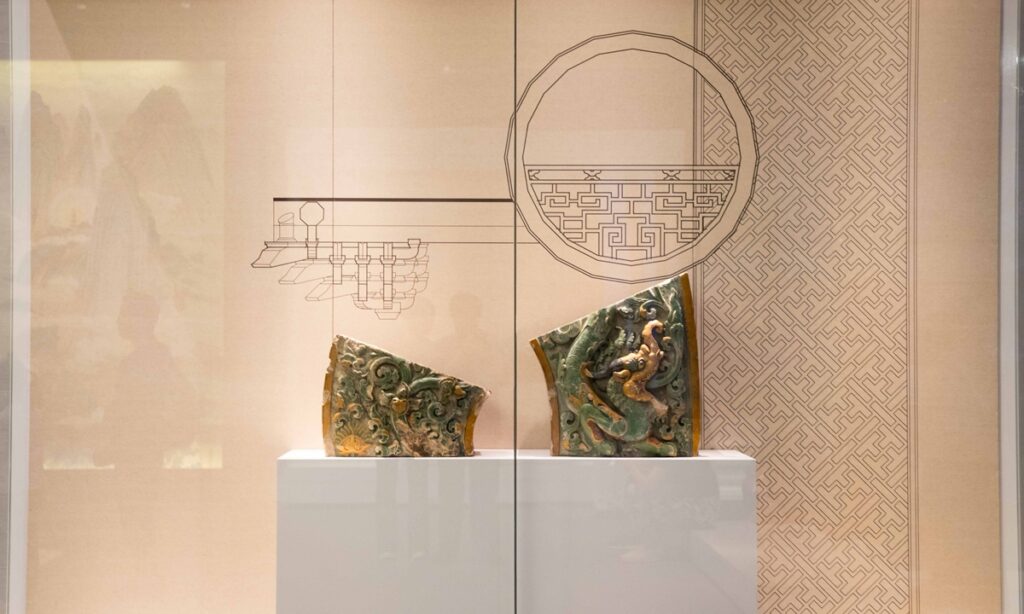The Nanjing Grand Bao’en Temple Heritage Museum in East China’s Jiangsu Province put on display a total of more than 60 new cultural relics on Monday. Among them, the highly anticipated “Many-colored Glazed Bricks with Dragon Relief Pattern,” which reconstruct the splendor of the Porcelain Tower of Nanjing, attracted numerous people.
These glazed bricks, unearthed in Nanjing, are highly glazed, which has allowed them to still maintain their characteristic luster despite their age, while the dragon body, eyes and claws formed by bricks are still lifelike.
Green, yellow, red, black and white glaze was used to make the bricks.
“The dragon relief of glazed bricks represent the national level of quality in ancient times,” Wang Xingping, the curator of the Nanjing Grand Bao’en Temple Heritage Museum, told the Global Times.
The Porcelain Tower of Nanjing, part of the former Great Bao’en Temple, was a pagoda constructed in the 15th century during the Ming dynasty (1368-1644), but was mostly destroyed in the 19th century during the course of the Taiping Rebellion. A modern life-size replica of it now exists in Nanjing.
The Porcelain Tower was regarded as “the best contrived and noblest structure of all the East,” French mathematician Le Comte said when he saw it.
Wang said he believes the main reason the Porcelain Tower shook the world and was able to rival other architectural wonders of the Middle Ages as a masterpiece of the world comes down to its artistry. These important dragon glazed components also point to the possibility that the core kiln that produced the glazed bricks for the pagoda was located in the vicinity of the Sai Hong Bridge.
The Nanjing Grand Bao’en Temple Heritage is regarded as the highest specification, the largest and most well-preserved ancient Chinese temple site by China’s National Cultural Heritage Administration. The museum also displayed a number of copper mirrors, copper coins, gilt round spherical boxes, copper plaques and other artifacts unearthed from the underground palace.
In addition to the glazed bricks and unearthed artifacts from the underground palace, some glazed ceramic jars, blue and white porcelain plates with floral motifs and other living utensils from the Qing Dynasty (1644-1911) that were unearthed from the Nanjing Grand Bao’en Temple are also on display, showing the hustle-and-bustle of the city in ancient times.
(Global Times)




